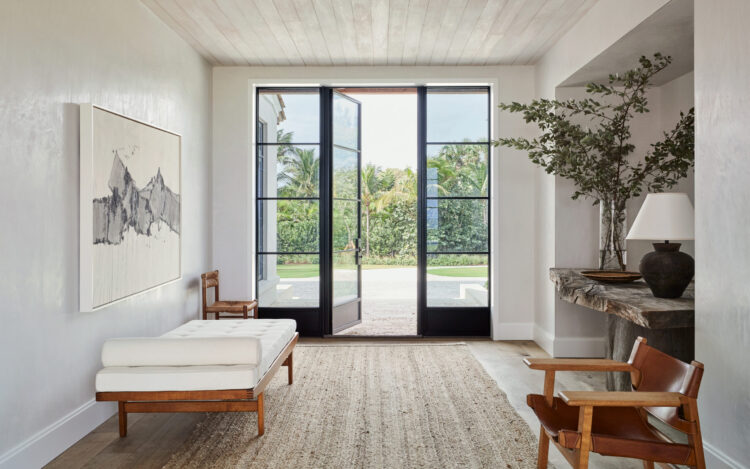What Room has No Doors or Windows : Exploring the Fascinating World

What Room has No Doors or Windows: In the realm of architectural marvels and puzzling curiosities, there exists a concept that challenges our conventional understanding of space and design. A room with no doors or windows stands as a fascinating enigma, capturing the imagination and sparking a sense of wonder. Within these confinements, the mind is left to ponder the mysteries of construction, purpose, and the interplay between reality and illusion.
Unveiling the Unconventional Space
Imagine stepping into a room that appears to defy the very essence of architecture. A space where walls seamlessly meld into one another, creating an impression of infinite continuity. Yet, upon closer inspection, the absence of doors or windows becomes strikingly evident. Such rooms, though rare in physical existence, have made their mark in literature, art, and even optical illusions. They challenge our perceptions and invite us to explore the concept of space beyond the ordinary.
The History and Symbolism
Rooms with no doors or windows have not only intrigued architects and designers but also captivated storytellers and philosophers throughout history. From the fabled locked chamber in Edgar Allan Poe’s “The Tell-Tale Heart” to the hauntingly mysterious room in Charlotte Perkins Gilman’s “The Yellow Wallpaper,” these spaces have served as metaphors for confinement, isolation, and psychological intrigue. The room becomes a canvas upon which authors paint complex narratives that delve into the human psyche.
Architectural Illusions and Contemporary Interpretations
In the realm of architectural design, the concept of a room devoid of doors and windows takes on a new dimension. Architects have experimented with optical illusions and creative techniques to craft spaces that appear to have no openings yet maintain functionality. The Barcelona Pavilion, designed by Ludwig Mies van der Rohe, boasts walls that seamlessly blend into each other, creating an illusion of boundarylessness. Contemporary architects, too, have embraced this concept, designing modern structures that challenge traditional design norms.
The Power of Perception
The allure of a room with no doors or windows lies in its ability to manipulate perception. Such spaces invoke a sense of intrigue as our minds struggle to comprehend the physical laws they seemingly defy. The absence of recognizable entrances or exits leaves us questioning the very nature of reality and the limitations of our understanding. These rooms test the boundaries of our spatial cognition, inviting us to contemplate the ways in which we perceive and navigate the world around us.
Cultural and Psychological Dimensions
Beyond the realm of design and literature, the concept of a room with no doors or windows has cultural and psychological implications. In certain cultures, the idea of an inaccessible room might evoke notions of secrecy, power, or exclusivity. Psychologically, these spaces may resonate with feelings of entrapment or liberation, depending on the perspective one brings to the experience. The mind’s reaction to such a space reveals its intricacies, reflecting both its innate curiosity and susceptibility to discomfort.
The Metaphorical Realm
In addition to its practical and psychological dimensions, a room with no doors or windows often occupies a metaphysical realm. It becomes a metaphor for the unknown, the immeasurable, and the unreachable. Philosophically, this concept ties into our contemplations about existence, knowledge, and the boundaries of our comprehension. Just as this room challenges our architectural assumptions, it also prompts us to ponder the limits of our intellectual and spiritual boundaries.
The Essence of Imagination
Ultimately, a room with no doors or windows encapsulates the essence of imagination. It invites us to think beyond the constraints of the ordinary, to explore uncharted territories of design, literature, and philosophy. In this space, our creativity and curiosity converge, allowing us to envision realities that stretch the limits of what we believe is possible. It serves as a reminder that innovation and understanding often arise from embracing the unknown and pushing against the confines of convention.
Conclusion: Beyond Walls and Boundaries
In the realm of architecture and beyond, a room with no doors or windows is more than a mere physical space; it is a testament to the power of human ingenuity and perception. Whether serving as a literary symbol, an architectural experiment, or a philosophical concept, this enigmatic chamber challenges us to reconsider the definitions of space, reality, and imagination. In a world that often emphasizes what is visible and tangible, these rooms remind us of the infinite possibilities that emerge when we venture into the realm of the unseen and the unexplored.
FAQs on Rooms with No Doors or Windows: Exploring the Mysterious and Imaginative Spaces
1. What is a room with no doors or windows?
A room with no doors or windows is a space that lacks traditional openings for entry or exit. These spaces challenge conventional architectural norms and often serve as thought-provoking concepts in literature, art, and design.
2. Do such rooms actually exist in reality?
While truly enclosed rooms with absolutely no doors or windows are rare, some architectural designs have utilized optical illusions or hidden openings to create the illusion of a room without visible access points.
3. What is the purpose behind creating a room without doors or windows?
The purpose can vary based on context. In literature and art, these rooms symbolize confinement, isolation, or psychological intrigue. In architecture, they might be designed to challenge perceptions, experiment with spatial boundaries, or convey a sense of continuity.
4. Are rooms with no doors or windows functional?
Architects have designed functional spaces without traditional openings, but they often incorporate hidden doors or openings for practical use. Truly functional spaces without any means of access would present logistical challenges.
5. What are the psychological effects of being in such a room?
The psychological effects depend on individual perceptions and context. Some might feel a sense of curiosity and intrigue, while others might experience discomfort or claustrophobia. These rooms can evoke emotions ranging from fascination to unease.
6. Are there famous examples of rooms with no doors or windows in literature?
Yes, famous literary works like Edgar Allan Poe’s “The Tell-Tale Heart” and Charlotte Perkins Gilman’s “The Yellow Wallpaper” feature rooms with no doors or windows as central symbols. These stories explore themes of confinement and psychological tension.
7. Can you name any architectural examples of such rooms?
The Barcelona Pavilion by Ludwig Mies van der Rohe is a notable architectural example. Its walls create the illusion of a space without clear boundaries, challenging visitors’ perceptions of traditional architecture.
8. How do rooms without doors or windows challenge our understanding of space?
These rooms challenge our notions of conventional design, spatial perception, and architectural boundaries. They prompt us to question how we navigate and interact with spaces and what defines the limits of architecture.
9. Are there cultural interpretations of rooms with no doors or windows?
In certain cultures, such rooms might symbolize secrecy, exclusivity, or power. The absence of visible access points could evoke different cultural meanings related to space and perception.
10. Do these rooms have philosophical implications?
Absolutely. These spaces can symbolize the unknown, the unattainable, and the philosophical concept of limits. Philosophers have used the idea of rooms without doors or windows to explore the boundaries of human understanding and existence.
11. How do optical illusions contribute to creating the illusion of such rooms?
Architects use techniques such as carefully designed angles, mirrors, and hidden openings to create the impression of a seamless, doorless, and windowless space. These illusions challenge viewers to rethink their perceptions of boundaries.
12. What can we learn from rooms with no doors or windows?
These rooms teach us about the power of perception, the boundaries of design, and the capacity of human imagination. They encourage us to think beyond the ordinary and explore the interplay between reality and illusion.
13. Are there virtual or digital representations of rooms without doors or windows?
Yes, virtual reality and digital art platforms have allowed artists and designers to create immersive experiences that simulate rooms with no doors or windows, pushing the boundaries of what is possible in both the physical and digital realms.
14. How does the concept of a room with no doors or windows relate to creativity?
These rooms exemplify the creative process by challenging conventions and inviting innovative thinking. They inspire artists, architects, and thinkers to explore new dimensions and possibilities in their respective fields.
15. What does the fascination with rooms lacking doors or windows say about human nature?
Our fascination reflects our innate curiosity and our desire to push the boundaries of what we understand. These spaces embody the essence of exploration, curiosity, and the human quest to transcend limitations.






